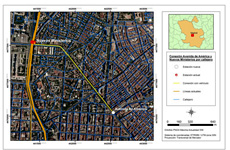
Categories
Publications
Accessibility of the existing commuter network in Madrid and its influence on Madrid Commuter railway Infrastructure Plan (2009 -2015)
19/4/2013

In order to avoid territorial imbalance typical of large metropolitan areas such as Madrid, cities should adopt proper planning that can help reduce the displacement of the population and therefore facilitate spatial movement. This is where the concept of accessibility comes into play, which however involves a number of aspects that are sometimes complicated to define.
This paper aims to address this issue strictly by looking at Madrid´s Cercanias network. In addition, it makes use of the Railway Infrastructure Plan designed in 2009 to quantify and illustrate both current accessibility values as well as future ones, once this plan is finalized. By means of the proposed methodology and the implementation of a series of indicators, logical and coherent results are achieved showing the improvement of the future network, which is proven to be much more diversified, more cohesive and thus more accessible. With all this in place, accessibility is shown to be a powerful planning tool with which to predict and reveal urban development patterns.
Download paper »


